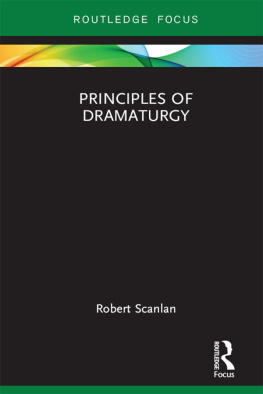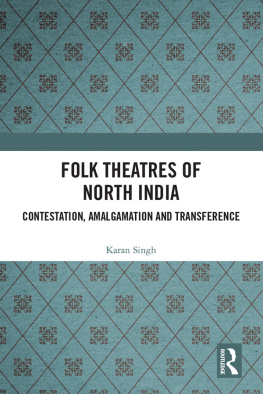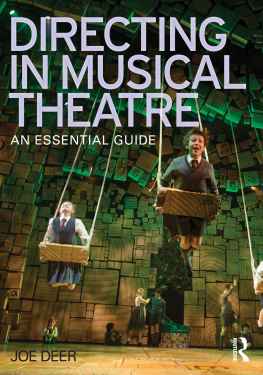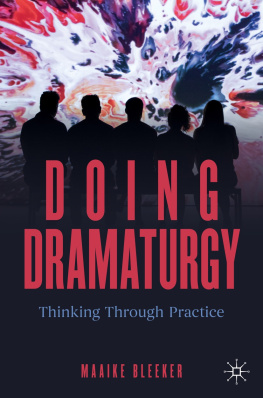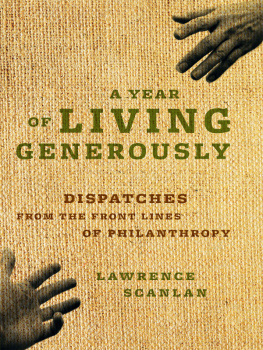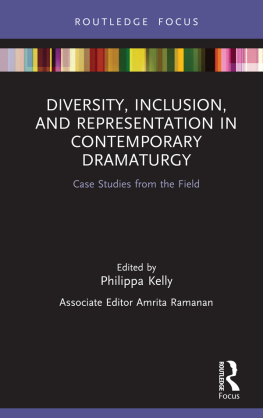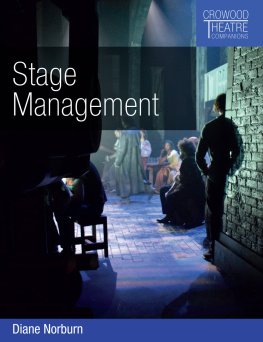Contents
Guide
Print Page Numbers

Principles of Dramaturgy
In Principles of Dramaturgy, Robert Scanlan explains the invariant principles behind the construction of stage and performance events of any style or modality.
This book contains all that is essential for training a professional stage director and/or dramaturg, including the plot-bead technique for analyzing play scripts developed by Scanlan. It details all the steps for the full implementation of Production Dramaturgy as it is practiced in professional theatres, and treats form and action as foundational cornerstones of all performance, rather than story elements a frequent and debilitating misprision in theatre practice. Scanlans unique approach offers practical training that is supported by detailed diagrams and contextualized instructions, making this the missing text for classes in dramaturgy.
Serving stage directors, dramaturgs, actors, designers, and playwrights, Principles of Dramaturgy is a comprehensive guide that puts the training of capable practitioners above all else.
Robert Scanlan is a theatre director and Artistic Director of The Poets Theatre. He has been teaching at Harvard University since 1989, first as the Literary Director of the American Repertory Theatre, where he headed the Dramaturgy and Playwriting Programs of the Institute for Advanced Theatre Training at Harvard. He later became Professor of the Practice of Theatre in the Department of English and chaired Harvards Committee on Dramatics.
Focus on Dramaturgy
Series Editor: Magda Romanska
The Focus on Dramaturgy series from Routledge developed in collaboration with TheTheatreTimes.com is devoted to the craft of dramaturgy from multiple contemporary perspectives. This groundbreaking comprehensive series is authored by top professionals in the field, addressing a variety of current hot topics in dramaturgy.
The series is edited by Magda Romanska, an author of the critically-acclaimed Routledge Companion to Dramaturgy, dramaturg, writer, theatre scholar, and Editor-in-Chief of TheTheatreTimes.com.
Shakespeare in Three Dimensions
The Dramaturgy of Macbeth and Romeo and Juliet
Robert Blacker
Words for the Theatre
David Cole
Principles of Dramaturgy
Robert Scanlan
New Dramaturgies
Strategies and Exercises for 21st Century Playwriting
Mark Bly
For more information about this series, please visit: www.routledge.com/performance/series/RFOD
Principles of Dramaturgy
Robert Scanlan

First published 2020
by Routledge
2 Park Square, Milton Park, Abingdon, Oxon OX14 4RN
and by Routledge
52 Vanderbilt Avenue, New York, NY 10017
Routledge is an imprint of the Taylor & Francis Group, an informa business
2020 Robert Scanlan
The right of Robert Scanlan to be identified as author of this work has been asserted by him in accordance with sections 77 and 78 of the Copyright, Designs and Patents Act 1988.
All rights reserved. No part of this book may be reprinted or reproduced or utilized in any form or by any electronic, mechanical, or other means, now known or hereafter invented, including photocopying and recording, or in any information storage or retrieval system, without permission in writing from the publishers.
Trademark notice: Product or corporate names may be trademarks or registered trademarks, and are used only for identification and explanation without intent to infringe.
British Library Cataloguing-in-Publication Data
A catalogue record for this book is available from the British Library
Library of Congress Cataloging-in-Publication Data
Names: Scanlan, Robert, 1948 author.
Title: Principles of dramaturgy / Robert Scanlan.
Description: Abingdon, Oxon ; New York, NY : Routledge, 2019. | Series: Focus on dramaturgy | Includes bibliographical references and index.
Identifiers: LCCN 2019013174| ISBN 9781138071162 (hardback : alk. paper) | ISBN 9781315114781 (ebook)
Subjects: LCSH: TheaterProduction and direction. | Dramaturges.
Classification: LCC PN2053 .S2556 2019 | DDC 792.02/33dc23
LC record available at https://lccn.loc.gov/2019013174
ISBN: 978-1-138-07116-2 (hbk)
ISBN: 978-1-315-11478-1 (ebk)
Typeset in Times New Roman
by Wearset Ltd, Boldon, Tyne and Wear
This book is dedicated to Joanne Baldine
and to our son, Robert
Contents
This book is pragmatic and aimed at earnest students: it seeks to set forth principles that are essential in writing, staging, rehearsing, and performing plays. My own plot-bead diagrams, for instance (and instructions for how to use them), have found wide circulation and are in use wherever my former students are teaching or practicing in the theatre. I wish I had named them something more elegant in Spanish, they are known more poetically as diagramas de cuentas but their utility has spread their use, and theatre practitioners have long since heard of them. If plot-bead diagrams become only a method of play analysis, something has been lost, for they diagram something more mysterious and philosophical than may at first meet the eye. The mystery of sculpting in time is not a simple concept, but it explains my first principle of dramaturgy: form. The second principle, action, is even more apt to be underestimated, probably because action is so common a word in English that it hides rather than reveals its full Aristotelian sense as a term of art. Action is not a story, it is not strenuous agitation (sword fights onstage, for instance). It is, in its deeper sense an inner essence of being alive, and it operates in every living moment until we die. Then it stops. Action is thus inescapable except that it inevitably will end. That catastrophe is inescapable. The theatre was invented to display this mystery, and to do so live. I have frequently wished we had a better word for it in English, and that is why I often substitute Aristotles praxis, as a way of signaling that the meaning is harder than you think. The term has nothing to do with Realism: abstract art is an action. Studied as a principle, action and its deep fusion with time, puts all theatre artists, musicians, dancers, and filmmakers on the right artistic path to be poets in its ancient meaning: makers, fabricators of art objects. Those entities are only metaphorically called objects in the case of the time-arts of performance.
My argument and my teaching are based on elemental underlying truths about playmaking (which is itself an action) and the medium of the drama (which is structured time). I use playmaking to include several disciplines usually differentiated from each other especially in relation to dramaturgy. The term playmaking is chosen to include playwriting, directing (especially the important work of what have come to be known as auteur directors, an interesting and telltale neologism), acting, stage management, and design in all its aspects: sets, costumes, lighting, props, and sound all of them incongruously bundled into a single catch-all phrase. Each discipline is habitually separated from the larger collective task of composing for the stage especially during training in schools and universities. But our terms reveal a

